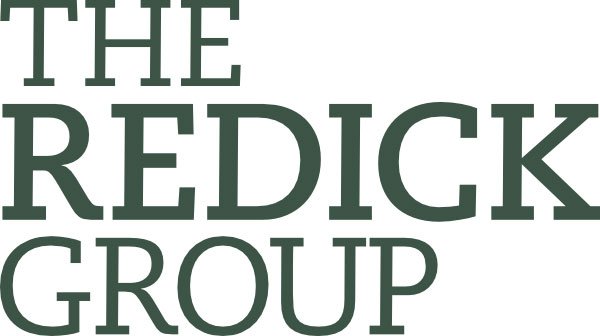What Is a purple squirrel? How unconventional executives can embrace uniqueness without apology
Navigating the Box—And Stepping Beyond It
In executive careers, there’s persistent pressure to fit into well-defined boxes—roles with strict requirements, industry norms, and traditional paths. Yet, some of the most impactful leaders are those whose backgrounds don’t fit neatly into these boxes. The challenge is learning how to balance professionalism with authentic uniqueness, so you’re ready when the right opportunity—one that truly values your distinct blend of skills—emerges.
Why fitting in matters—but not at the expense of what makes you valuable
Meeting core requirements is essential for credibility and initial consideration.
Demonstrating versatility shows you can adapt to standard expectations and environments.
But over-conforming can erase what sets you apart, making you invisible for roles that require a unique combination of skills or perspectives.
The key is to fit enough to be considered, but not so much that you lose your edge.
The power of professional unconventionality
Innovation often comes from those with non-linear paths. Research shows leaders with diverse backgrounds are better equipped to navigate ambiguity and drive innovation, with companies led by such executives being significantly more likely to outperform on profitability.
Organizations facing disruption or transformation need leaders who think differently. Diversity in career path, industry, and perspective correlates with higher innovation and business performance.
Executives with unusual backgrounds may be the “missing piece” for specific, high-impact roles. “Purple squirrels”—as Dr. John Sullivan describes—are extreme innovators who can shift a company’s direction and success.
This is a narrow, but critical, intersection: only some companies and roles will truly value the unconventional. But for those organizations, your difference isn’t a liability—it’s a strategic asset.
The purple squirrel in action: A real-world example
When working with executive clients, the concept of the "purple squirrel" often becomes most relevant when someone is worried about an unchangeable data point in their background, or when their career path feels "all over the place." Rather than encouraging clients to hide these facts, I recommend embracing them—using strategic context to turn what feels like a liability into a unique asset. With the right narrative, the distinctive parts of a career can become precisely what sets a candidate apart for the right audience.
There are ways to package an all-over-the-place career, but it takes work—and the payoff can be extraordinary.
A purple squirrel story
Starts as a pianist, earning a doctorate in music.
After four years of post-doc work, realizes teaching and performing aren’t fulfilling.
Pursues a law degree, shifting into legal practice.
By the fifth year as a law firm associate, seeks a move to the business side.
Transitions into an in-house deal-making role.
After five years, advances to partnership management executive.
As a partnership management executive, develops several hundred global company relationships, including with suppliers.
A renowned company, Steinway & Sons, retains a search firm for a global executive search:
Role: SVP of Global Partnerships
Requirements:
Strong global supplier relationships
Significant experience in deal structuring and legal negotiation
Ideally, a deep understanding of the classical music business
This candidate, whose career path might seem "all over the place" on paper, turns out to be the exact right fit:
Music doctorate: Deep understanding of the classical music business
Legal background: Expertise in deal structuring and negotiation
Business experience: Proven ability to build and manage global supplier relationships
That’s how a purple squirrel is born: a unique combination of skills and experiences, impossible to plan for, but invaluable when the right opportunity arises.
Risk appetite: When to lean in, when to play it safe
The decision to fully embrace and broadcast your “purple squirrel” qualities isn’t just about self-awareness—it’s about timing and risk tolerance.
Assessing your risk profile
If you’re currently unemployed or urgently need a paycheck: Prioritizing traditional boxes and minimizing perceived risk may be the most pragmatic approach. In these situations, standing out as “too different” could lengthen your job search and delay financial stability.
If you’re securely employed and planning a long-term transition: You have the runway to be more selective and authentic in your branding. This is the ideal scenario for leveraging the purple squirrel concept—showcasing your full spectrum of experiences, even those that don’t fit the mold, to attract the rare, right-fit opportunities. Career strategist May Busch’s research underscores that the most effective transitions occur when you have the flexibility and security to take calculated risks.
If you’re a stealth or passive job seeker: You can gradually build your narrative and visibility, positioning yourself for future moves without signaling to your current employer that you’re on the market. Dr. Sullivan describes these as “super passive” candidates—top talent who must be sought out and rarely apply for jobs themselves.
Practical guidance
Know your risk tolerance. Your willingness to “color outside the lines” should be informed by your financial situation, career goals, and urgency.
Strategically curate your story. Not every detail needs to be public. Highlight the unconventional when you have the flexibility to wait for the right opportunity, but focus on alignment with core requirements when speed is essential.
Embrace completeness, but stay pragmatic. The goal is not to hide your uniqueness, but to deploy it wisely based on your circumstances.
Telling your story: Judgment and guidance
Deciding which parts of your story to share is both an art and a science. Consider these principles, supported by leading research:
Align With the Role’s Core Needs
Highlight experiences and skills that directly address the business challenges at hand.
Use language that bridges your unique background to the organization’s goals.
Frame the Unconventional as Value-Add
Explain how your atypical experiences led to results, innovation, or resilience. Non-linear careers can unlock fulfillment and high performance.
Show how your perspective fills gaps that traditional candidates might leave open.
Balance Transparency With Professionalism
Don’t be embarrassed by what makes you different—own it with confidence. NYU Stern’s Julianna Pillemer calls this “strategic authenticity,” balancing self-expression with professional context.
Provide enough context for your audience to appreciate the value of your path.
Use your summary and recommendations to connect the dots for recruiters and decision-makers.
Exercise Judgment
Not every detail needs to be public; curate your brand for relevance and resonance.
Seek feedback from trusted mentors or advisors on how your story lands.
LinkedIn and executive branding: practical steps
Audit your profile for both conventional strengths and unique differentiators. The Joint Collective finds that 75% of professionals see a well-defined personal brand as crucial for advancement.
Craft a summary that tells a coherent, intentional story about your career.
Incorporate keywords that reflect both standard and specialized skills.
Engage thoughtfully with content and networks that value diversity of experience.
When to step forward
Be open to roles that require your rare mix of skills, even if they’re not always available.
Don’t hide your star-shaped qualities—when the right opportunity arises, you’ll be the obvious choice.
Need help navigating your journey?
Professional authenticity is about showing up as your best, most relevant self—not squeezing into someone else’s mold. The judgment lies in knowing how much to reveal, and when, so your story resonates with the right audience at the right time. Embracing the completeness of who you are is most powerful when you have the flexibility to wait for the right fit, but even then, there will be plenty to do and plenty of people who won’t appreciate your difference. The reward is being ready when the right opportunity—one that truly values your uniqueness—finally appears.
Connect with us for executive coaching and get personalized support to clarify your “purple squirrel” journey, or learn how our executive branding and career strategy services can help you position your uniqueness for the right-fit opportunities.
About Jared
Jared Redick is a San Francisco-based executive coach, communications strategist, and brand development consultant with more than 25 years of experience helping companies and high-level professionals position themselves for growth and change. Get career coaching here, co-develop your professional identity here, or connect with Jared on LinkedIn.
References
The Redick Group. (2016). Your Star-shaped Peg Isn't Meant to Fit in that Square-shaped Hole.
Sullivan, J. (ERE). "Purple Squirrels: The Most Valuable Innovators."
Harvard Business Review. "Don’t Hire the Perfect Candidate."
Pillemer, J. (NYU Stern). "Strategic Authenticity in Professional Branding."
The Joint Collective. "Personal Branding and Career Advancement."
MedCity News. "Why Non-Linear Leaders Win in Uncertain Times."
Forbes. "How Non-Linear Careers Unlock Success."
McKinsey & Company. "Diversity Wins: How Inclusion Matters."
Boston Consulting Group. "How Diverse Leadership Teams Boost Innovation."
May Busch. "Career Timing and Risk Appetite."


